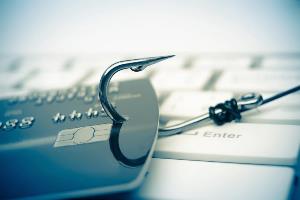



Date:29/03/17
 Phishing is the most common method of stealing information from people. The term “Phishing” originated from the English language as a distortion of the word “fishing” meaning “feeding”.
Phishing is the most common method of stealing information from people. The term “Phishing” originated from the English language as a distortion of the word “fishing” meaning “feeding”.
The main purpose of phishing attacks is to steal people’s accounts by sending internet users links to fake webpages that look like the real ones in order to redirect users to these webpages.
Using this method, the attacker can easily obtain the user’s account and start using it, while the latter remains unaware of this.
For example, any person can send you a message on “Facebook” social network. This message can hold a link to a certain webpage.
Even if the login page and domain name that you will see after clicking on the link will look like the real ones, they still could be fake.
If you look more carefully at the domain name, you will see that it doesn’t belong to Facebook. The domain names of fake “Facebook” pages usually resemble the real one like “www.faceboook.com”, “www.facebo0k.com”, “www.facebuk.com”, or you may even see the domain name that doesn’t look like the real one at all.
Taking the above into considerations, the Electronic Security Centre of the Ministry of Transport, Communications and High Technologies recommends internet users to take the following precautionary measures to avoid phishing attacks:
Be suspicious of messages that require an immediate response from you
Do not respond to e-mails and messages that ask for your financial and personal accounts
Do not click on the links that are sent to you while you are using e-mail and instant messaging programs
Check carefully if you have entered the address of the required webpage from the Web browser
Don’t click on unknown email addresses or links that have been sent to you by other users
Don’t send your personal information or your bank accounts via e-mail or instant messaging programs
Be sure that Web browsers are updated constantly, because browsers often identify phishing attacks and prevent you from visiting insecure webpages
Please pay attention to issues related to security while shopping online. For example, after logging in to a website, be sure that URL address contains "https" instead of "http". That is, it has "Secure Sockets Layer" (SSL) certificate which encrypts the information you send to the website.
Always keep “Firewall” on the Operating System turned on (There are settings on the Control Panel of the Operating System).
How to avoid phishing attacks?
 Phishing is the most common method of stealing information from people. The term “Phishing” originated from the English language as a distortion of the word “fishing” meaning “feeding”.
Phishing is the most common method of stealing information from people. The term “Phishing” originated from the English language as a distortion of the word “fishing” meaning “feeding”.The main purpose of phishing attacks is to steal people’s accounts by sending internet users links to fake webpages that look like the real ones in order to redirect users to these webpages.
Using this method, the attacker can easily obtain the user’s account and start using it, while the latter remains unaware of this.
For example, any person can send you a message on “Facebook” social network. This message can hold a link to a certain webpage.
Even if the login page and domain name that you will see after clicking on the link will look like the real ones, they still could be fake.
If you look more carefully at the domain name, you will see that it doesn’t belong to Facebook. The domain names of fake “Facebook” pages usually resemble the real one like “www.faceboook.com”, “www.facebo0k.com”, “www.facebuk.com”, or you may even see the domain name that doesn’t look like the real one at all.
Taking the above into considerations, the Electronic Security Centre of the Ministry of Transport, Communications and High Technologies recommends internet users to take the following precautionary measures to avoid phishing attacks:
Be suspicious of messages that require an immediate response from you
Do not respond to e-mails and messages that ask for your financial and personal accounts
Do not click on the links that are sent to you while you are using e-mail and instant messaging programs
Check carefully if you have entered the address of the required webpage from the Web browser
Don’t click on unknown email addresses or links that have been sent to you by other users
Don’t send your personal information or your bank accounts via e-mail or instant messaging programs
Be sure that Web browsers are updated constantly, because browsers often identify phishing attacks and prevent you from visiting insecure webpages
Please pay attention to issues related to security while shopping online. For example, after logging in to a website, be sure that URL address contains "https" instead of "http". That is, it has "Secure Sockets Layer" (SSL) certificate which encrypts the information you send to the website.
Always keep “Firewall” on the Operating System turned on (There are settings on the Control Panel of the Operating System).
Views: 472
©ictnews.az. All rights reserved.Similar news
- Cellphone Use May Raise Cancer Risk
- Australian police pushes cyber safety education
- Vietnam aims to lead in e-government
- Senate Website Gets Hacked
- US builds net for cyber war games
- Japan enacts anti-computer virus law
- India passes law vs e-waste
- Anonymous Declares War On The City Of Orlando
- Microsoft highlights evolving dangers as online identity data proliferates
- Consumers want internet security to be provided by banks
- Government facilities targets of cyber attack
- South Korean web attacks might been war drill
- Sri Lanka to Establish National Passport Database to Increase Border Security
- Hi-tech crime agencies set to employ information security professionals
- Phone hacking and online campaign bring down the News of the World





















